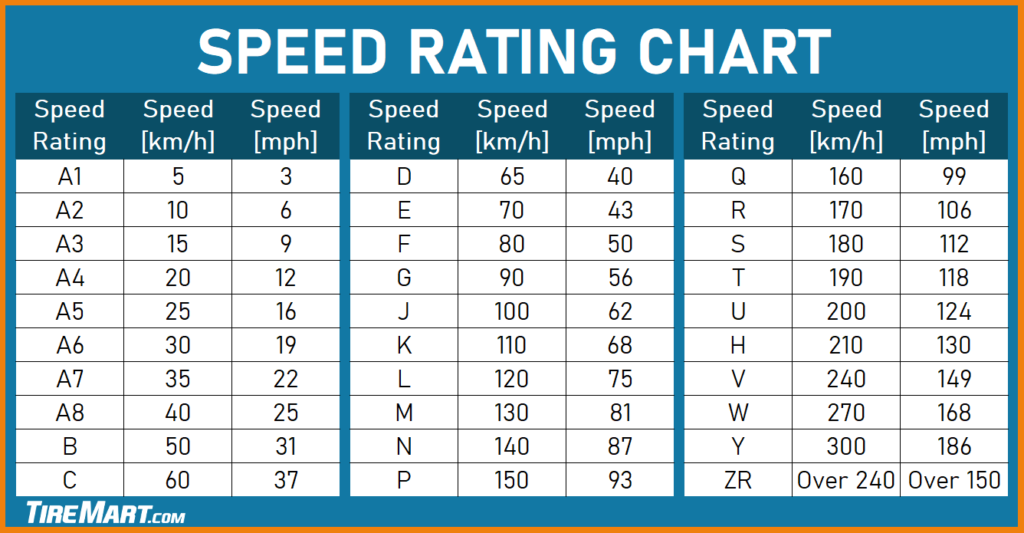Top 10 Insights on Tire Speed Rating S
Discover the key points about tire speed rating S and why it's crucial for your vehicle's performance and safety.

Understanding what is tire speed rating S is essential for enhancing your vehicle's performance and safety. It may seem like just another detail in the complex specifications of your vehicle, but this rating holds critical information about the capability of your tires under speed. From the daily commute to adventurous road trips, knowing the meaning and implications of this rating can make a significant difference in your driving experience.
What is Tire Speed Rating S?
The tire speed rating S is a classification that indicates the maximum speed at which a tire can safely carry a load under specified service conditions without failing. It's a vital piece of information for drivers, reflecting on the tire's ability to handle heat build-up, wear, and performance at higher speeds. This rating is especially relevant for drivers who prioritize safety and durability over high-speed performance.
List of Top Choices
- Understanding Tire Speed Ratings
- Importance of Tire Speed Rating S
- Comparison with Other Speed Ratings
- How to Check Your Tire's Speed Rating
- Implications of Speed Rating S on Safety
- Impact on Vehicle Performance
- Choosing the Right Tire for Your Needs
- Maintenance Tips for S-Rated Tires
- Common Myths About Tire Speed Ratings
- Future of Tire Technology and Speed Ratings
Understanding Tire Speed Ratings

- Speed ratings range from A (the lowest) to Y (the highest).
- Each rating represents the maximum speed a tire is certified to safely handle.
- These ratings are determined through controlled tests.
Tire speed ratings are not just arbitrary letters assigned to tires; they are the result of rigorous testing and standards development. Initially designed for high-performance vehicles, these ratings are now a universal system that indicates the level of speed and performance for which a tire is suited. For example, an S-rated tire is certified to handle speeds up to 112 mph. Understanding these ratings is crucial for choosing tires that match your vehicle's performance capabilities and your driving needs.
Importance of Tire Speed Rating S
- Suitable for vehicles that do not require high-speed performance.
- Ensures a balance between durability and handling at moderate speeds.
- Often found on sedans, minivans, and some SUVs.
The S speed rating is an important consideration for many drivers, particularly those who prioritize safety and durability over the ability to drive at high speeds. Tires with an S rating are optimized for performance at speeds up to 112 mph, making them an excellent choice for everyday vehicles such as family sedans, minivans, and some light-duty SUVs. Choosing a tire with the appropriate speed rating for your vehicle and driving habits is crucial for ensuring optimal performance and safety on the road.
Comparison with Other Speed Ratings
- S-rated tires are slower than performance tires with ratings like V or W, but offer more comfort.
- Higher speed ratings usually mean a compromise on tire lifespan.
- Lower speed ratings, such as S, focus on durability and longevity.
When compared to higher speed ratings like V (up to 149 mph) or W (up to 168 mph), S-rated tires may not support the same level of performance for high-speed driving. However, they excel in areas that are more relevant to everyday drivers, such as improved durability, comfort, and a longer lifespan. The preference for S-rated tires among manufacturers of family vehicles underscores their suitability for regular driving conditions, along with an emphasis on safety and economics over sheer speed.
How to Check Your Tire's Speed Rating

- The speed rating is located at the end of the tire's size code.
- It is represented by a letter, such as S for 112 mph.
- Understanding this code is essential for maintaining your vehicle’s safety and performance.
Checking your tire's speed rating is straightforward once you know where to look. The rating is typically found at the end of the tire's size code, which is printed on the tire's sidewall. For instance, if the size code ends with an "S," your tire is rated for speeds up to 112 mph under optimal conditions. Familiarizing yourself with this rating is a simple yet effective way to ensure that your tires are suited for your driving habits, ultimately contributing to the overall safety and efficiency of your vehicle.
Implications of Speed Rating S on Safety
- Appropriate for the maximum speeds of most non-performance vehicles.
- Contributes to vehicle stability and control at moderate speeds.
- Enhances safety by matching the tire’s performance capabilities with typical driving conditions.
The safety benefits of selecting tires with an S speed rating cannot be overstated for the average driver. These tires are designed to provide optimal performance at the speeds most commonly encountered during everyday driving, thus enhancing vehicle stability and control. By choosing tires that align with the speed capabilities of most family and standard vehicles, drivers can ensure that their vehicle's performance is both safe and reliable. Moreover, the emphasis on durability and longevity inherent in S-rated tires contributes to their overall value and effectiveness in maintaining vehicular safety over time.
Impact on Vehicle Performance
- Optimizes comfort and noise levels for a better driving experience.
- Improves fuel efficiency due to less rolling resistance.
- Suitable for a wide range of weather conditions.
The impact of S-rated tires on vehicle performance extends beyond safety. These tires are specifically designed to enhance driving comfort and reduce noise, making for a more pleasant journey, especially on long drives. Due to their construction, they also offer reduced rolling resistance, which can favorably affect fuel efficiency. Furthermore, S-rated tires are versatile, performing reliably across a broad spectrum of weather conditions, which adds to their appeal for drivers who experience varied climates.
Choosing the Right Tire for Your Needs

- Consider your typical driving speeds and conditions.
- Balance performance needs with budget constraints.
- Check compatibility with your vehicle's manufacturer recommendations.
Choosing the right tire requires a careful consideration of your driving habits, vehicle capabilities, and budget. If your daily travel doesn't involve high-speed or aggressive driving, then S-rated tires might be the ideal match, offering safety, durability, and comfort without the cost of high-performance tires. It's also crucial to ensure that your selection aligns with your vehicle manufacturer’s recommendations for optimal compatibility and performance. Balancing these factors can lead you to a tire choice that enhances your driving experience while meeting your safety and financial needs.
Maintenance Tips for S-Rated Tires
- Regularly check tire pressure to prevent uneven wear.
- Rotate your tires according to the schedule in your vehicle’s manual.
- Inspect tires regularly for signs of damage or wear.
To ensure the longevity and performance of S-rated tires, regular maintenance is essential. Keeping tires inflated to the manufacturer's recommended pressure extends their life and aids in fuel efficiency. Tire rotation is another key aspect of maintenance that promotes even wear, extending the usability of your tires. Additionally, frequent inspections can catch issues like cracking, punctures, or uneven wear early, allowing for timely repairs or replacements. Following these maintenance tips can maintain your tires in top condition, ensuring safety and reliability on the road.
Common Myths About Tire Speed Ratings
- Higher speed ratings do not necessarily mean better overall performance.
- S-rated tires are not only for "slow" vehicles.
- Speed rating does not impact fuel efficiency directly.
There are several misconceptions about tire speed ratings. The belief that a higher speed rating automatically indicates a better tire is widespread but incorrect. While higher-rated tires are necessary for high-performance vehicles, an S rating offers ample safety and performance for most standard vehicles, without the need for premium pricing. Additionally, the notion that S-rated tires are only suitable for slower vehicles ignores their benefits in durability and comfort, which are priorities for many drivers. Lastly, speed rating itself does not directly affect fuel efficiency; rather, factors like tire construction and tread patterns play a more significant role in fuel consumption.
Future of Tire Technology and Speed Ratings
- Innovations in materials technology could lead to even safer, more efficient tires.
- Speed ratings may evolve to accommodate advances in vehicle performance.
- Environmental considerations will likely influence future tire designs.
The tire industry continues to evolve, driven by advancements in materials science and changing market demands. The future of tire technology promises even higher levels of safety, efficiency, and environmental sustainability. As vehicles become more advanced with the integration of electric powertrains and autonomous driving technology, tire speed ratings and designs will adapt to meet these new challenges. Moreover, the industry’s focus on sustainability will likely result in tires that offer reduced rolling resistance and longer life, made from environmentally friendly materials. Understanding these trends is crucial for drivers and professionals alike, as they navigate the future of transportation.
What's Your Reaction?










































































